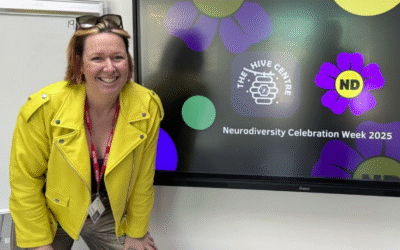When we discuss diversity, equity, and inclusion at work, the conversation often begins with what is visible and is centred first. There can be work done on things like representation, images on social media, setting up surveys and statements on websites. These are all great things, but the real work on inclusion is deeper than that. It does not begin at the centre, it begins at the edges.
A 2023 CIPD report revealed that only 43% of employees in the UK believe their company is inclusive. Consider what you are doing to listen to those who have not been heard before and feel there is work to be done. And that listening does not need to be in big group meetings. Those are often the worst places to start for inclusion. Some people will never feel they can speak up and say what they think in a meeting. Listening to everyone requires more thinking, creativity and leadership to understand what is happening in an organisation.
Why the Edges Matter
Inclusion is not just about making space for people in spaces that already exist. How can you listen to people to hear what is missing and who is feeling that they are not being included? People who have often felt they are at the edges are the people who hold unique perspectives. They see the gaps. They know where systems break down. They have ideas and innovations that those in power might never have considered.
This is especially urgent in industries like tech and gaming. These sectors are built on innovation, but often replicate the same narrow perspectives. To build products and experiences that reach everyone, and can be used by everyone, we need input from everyone. For companies developing products and services, not including people is risky and may mean that the impact and reach of products and services is limited.
Understanding differences should be seen as the source of strength for any team. Investing time and energy to listen and learn is what drives innovation. For companies wanting to solve problems, moving beyond creating products and services for those at the centre only will mean that wide problems get addressed and solved. This means asking the uncomfortable questions. This needs an understanding that equity does not mean treating everyone the same. It’s about understanding what is needed to reach everyone.
Leading With Differences
For change to stick, leaders will need to feel uncomfortable to learn. That means listening to the people at the edges, even when their feedback challenges you. It means making space for voices you might not have listened to before. Diversity, equity and inclusion work should move outside of particular roles. This is not the responsibility of HR only. It should become part of the culture and part of everyone’s role. Leaders need to model inclusive behaviours and value differences in everything. This is from hiring approaches, promotions, running meetings and team collaboration.
From Listening to Action
Listening and understanding are the starting points. This must be followed by action. Those actions need to be wide-ranging, looking at how you work and who is involved. We work with companies on those actions. Here are some common themes:
- Review your policies and processes
- Understand your data
- Look at hiring and retention
- Implement employee engagement actions
- Ongoing training on a range of subjects
For a future-ready company, start by listening and engaging employees. Consider how you lead and how you can continue listening to what matters to people.
We run training for leaders on Leading With Differences, and we help companies to listen to employee feedback and take action. Contact us to find out more.




